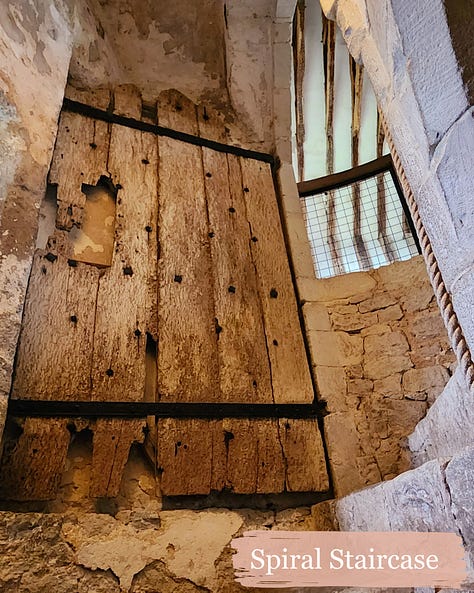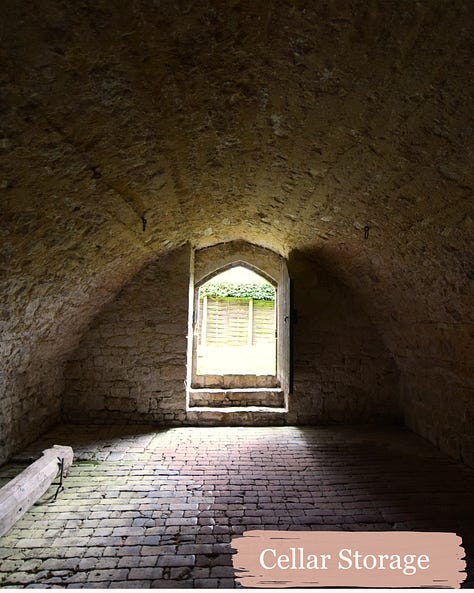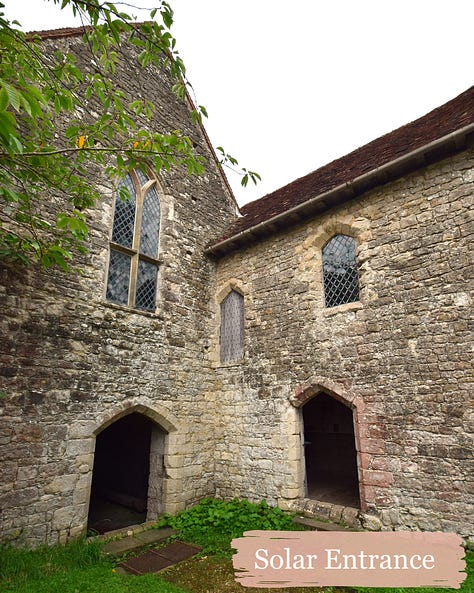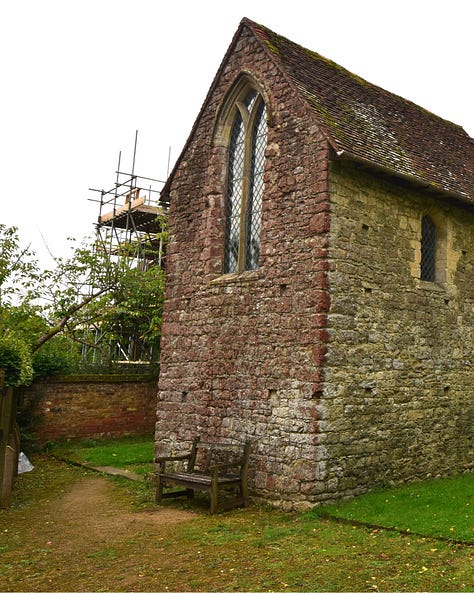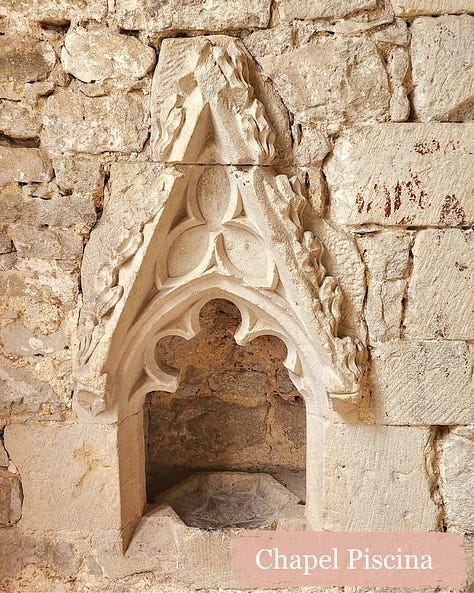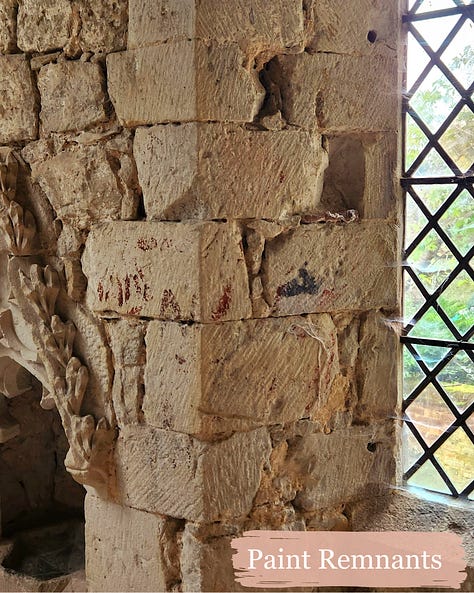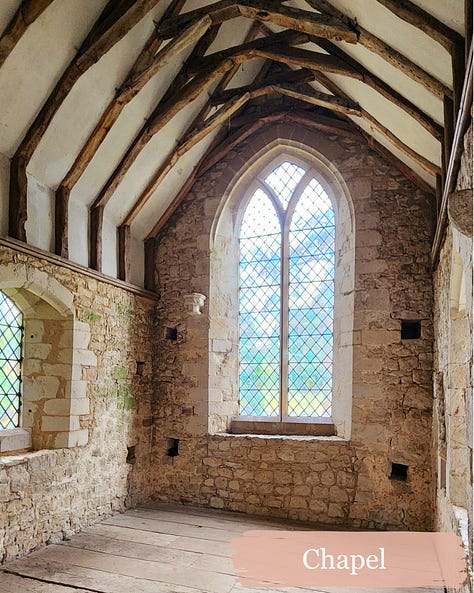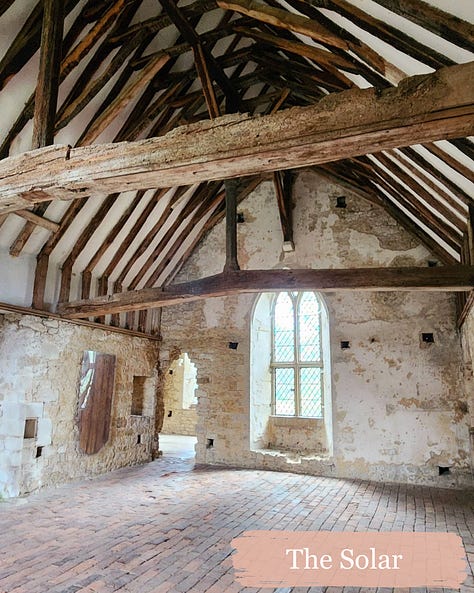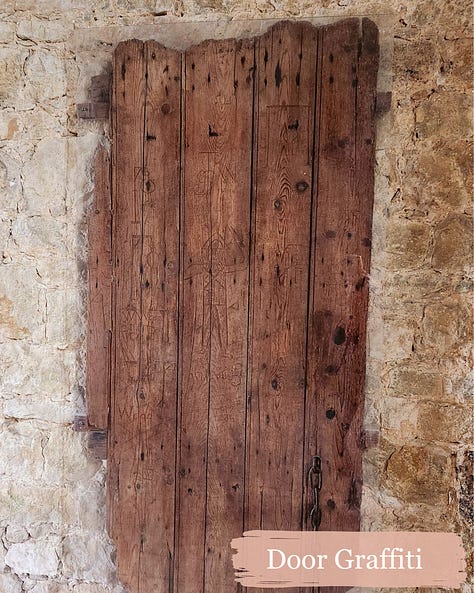Old Soar Manor isn’t directly tied to any of the historical figures in my book, but it is an excellent and rare example of a medieval manor house. Constructed around 1290, it is still in excellent condition.
Back then, Old Soar was a part of Wrotham, granted to the Archbishop of Canterbury who subsequently leased Old Soar to the Culpeper family. The surrounding lands were tended by peasants while the lords of the manor held courts, settled disputes, collected taxes, and provided military service to the king. At the turn of the 14th century, the village of Plaxtol did not exist. The closest town was Wrotham where the Archbishop of Canterbury had a palace. A market was established here from 1315.
The Great Hall was originally where the red brick building stands today. It served as the heart of the manor. By the late thirteenth century, a bit of privacy was becoming more fashionable and the Culpeper family built an addition. The bottom floor served as cellar space. The spiral staircase leading up to the first floor is designed for defense as it was built in a period of common theft and lawlessness. Arrow slits also provided protection.
The upper floor featured the solar, a long hall with an elegant roof, characterized by large windows. Initially, these windows would not have held glass. Instead large shutters would be closed in poor weather. A fireplace in the center of the hall heated the room and drew the smoke out of the room. The room would have been painted (a few traces remain) and hung with tapestries or painted clothes. Furniture would be minimal aside from a bed. The two other rooms on the upper floor are a chapel (the piscina is still visible) and a garderobe which served as both a bathroom and a storage space.
By the 16th century, the Culpeper family was no longer in residence. In 1780, the state of the Great Hall was so perilous that it was torn down and replaced by a Georgian house. The Solar addition continued to be used for agricultural purposes and was finally restored shortly after WWII. It provides a wonderful time capsule of what manorial life looked like during the reign of Edward II.
